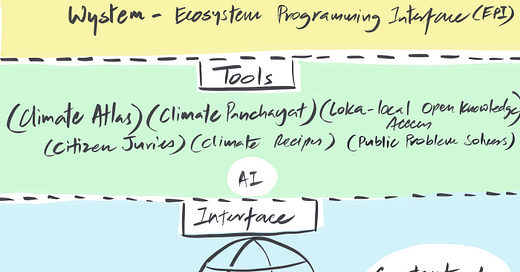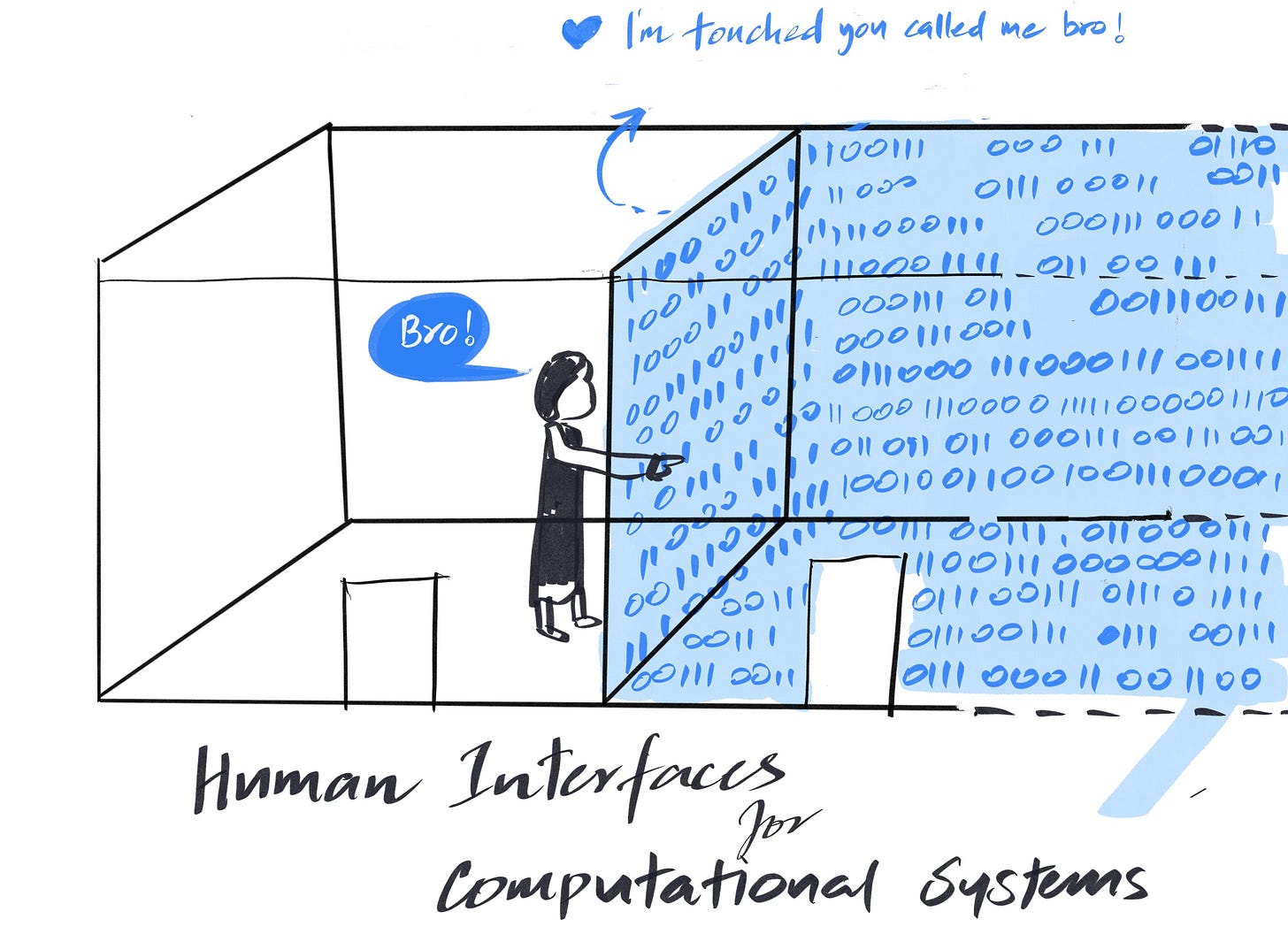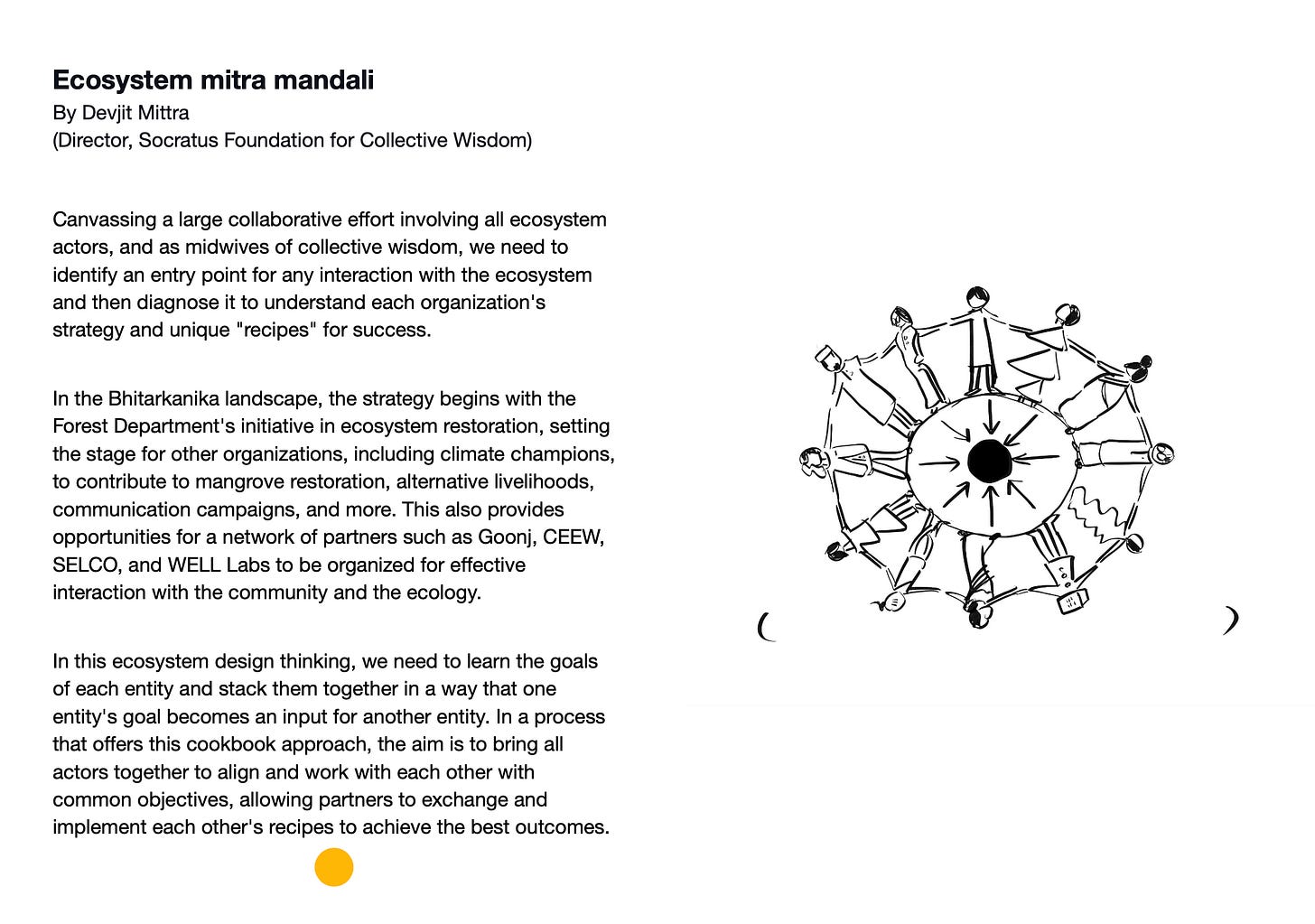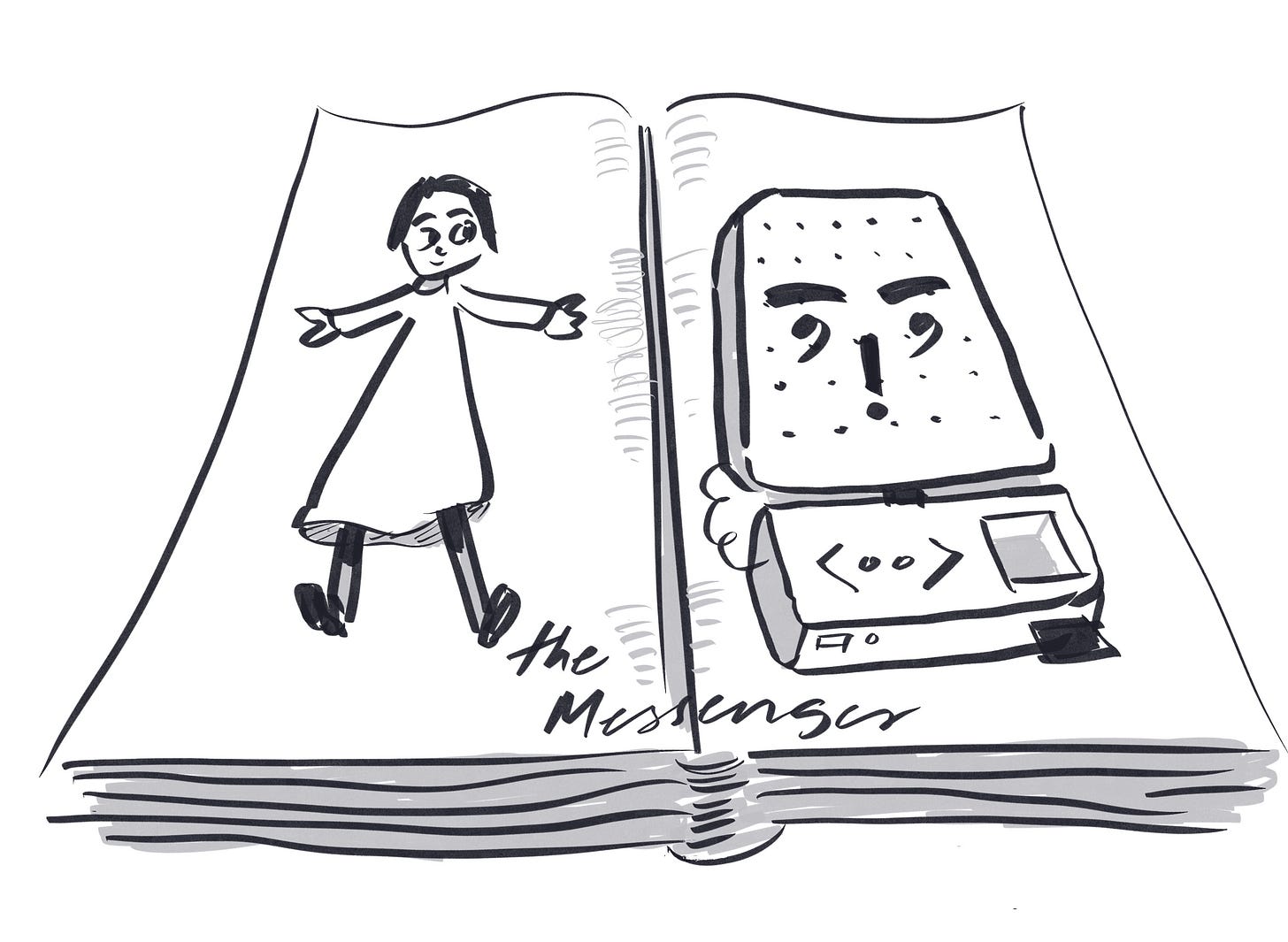Wystems Thinking 1: Back to the Human Computer
Wystems Thinking
The Messenger has been in hibernation for a few weeks, but we are back and with a bang and ready to talk about some of the ideas and opportunities that excite us. And what's more exciting today than technology when it looks like President Musk is about to get rid of the American government and replace it with teenager memecoiners.
The earliest computers, in fact, from whom the name actually arises, were people, often women, who did calculations by hand. But capitalism has always liked automation, so we moved from human computers to hand-assembled baseball court sized behemoths, where hardware and software were the same thing because literally every logical connection was also a hardwired physical connection.
From there to punch cards in a couple of decades, another decade to languages that were still quite close to the metal like C, and computing keeps ascending to higher and higher levels of abstraction. Soon, we may have computing with AI, which doesn't involve any coding at all. We are ready to turn the wheel of computing full circle and get back to the origins of computing where computers are people.
No, we don't want to turn everybody into a robot, but it might be useful to think how social and ecological relations and the organization of society and our environment can be thought through in computational terms. That's the future we have alluded to in the past with our musings on the Wystem and the Ecological Programming Interface that we have talked about in the past.
Wystems Thinking is not just a clever play on words--it's a necessary reframing of how we understand the world in an era where systems are no longer just tools we use but environments we inhabit. The Wystem, as we have explored before, is a way to think about interwoven computational, social, and ecological networks--not as separate domains but as co-evolving structures. And if we take this perspective seriously, it means that thinking in terms of systems--whether technological, natural, or social--is not enough. We need Wystems Thinking: an approach that recognizes the emergent, recursive, and often unpredictable nature of interconnected structures.
In some ways, this is the logical conclusion of computing's evolution from the hardwired logic gates of early machines to the fluid, generative possibilities of AI-driven processes. As computation ascends, it begins to merge with the very processes that define life itself--feedback loops, adaptation, emergence. The difference between an algorithm and an ecological cycle, between a neural network and a social movement, starts to blur. If early computers were people, and future computers might again be people--networked, augmented, and symbiotic with AI--what does that mean for governance, economy, and even identity itself?
This is what Wystems Thinking will explore: the implications of computation not as a tool, but as an organizing principle of life itself.
You can check some of our writings on the Wystem and the EPI here, but in 2025 we want to take the next step towards Wystems Thinking. This essay is the first in a series on Wystems Thinking.
Our Thoughts on the Wystem
In our previous discussions, we've delved into the concept of the Wystem--a framework designed to tackle "wicked problems," which are complex, multifaceted issues resistant to straightforward solutions. Traditional problem-solving methods often fall short when addressing these challenges due to their intricate interdependencies and evolving nature. The Wystem approach seeks to navigate this complexity by integrating computational thinking with ecological and social considerations, fostering a holistic understanding of the systems at play.
A central component of the Wystem is the Ecosystem Application Programming Interface (EAPI). Drawing inspiration from software development, where APIs allow different programs to communicate seamlessly, the EAPI envisions a standardized method for diverse systems--be they technological, natural, or social--to interact. This interface aims to facilitate the exchange of information and resources across various domains, promoting collaboration and adaptability in problem-solving efforts.
Building upon this foundation, we've introduced the concept of "recipes" within the Wystem framework. Much like culinary recipes provide step-by-step instructions to achieve a desired dish, Wystem recipes offer structured guidelines to address specific aspects of wicked problems. These recipes are designed to be modular and adaptable, allowing practitioners to tailor them to the unique contexts and challenges they face. By following these recipes, individuals and organizations can systematically approach complex issues, leveraging the collective knowledge embedded within the Wystem.
To further enhance the Wystem's applicability, we've developed the Ecological Programming Interface (EPI). While the EAPI focuses on facilitating interactions between diverse systems, the EPI is specifically tailored to integrate ecological considerations into computational processes. It provides a framework for embedding environmental data and principles into decision-making algorithms, ensuring that ecological impacts are accounted for in technological and social interventions. This integration is crucial for developing sustainable solutions that harmonize with the natural world.
Underlying the Wystem is a robust infrastructure that supports its various components. This infrastructure encompasses both the technological platforms that enable data exchange and the social structures that foster collaboration among stakeholders. It includes databases, communication networks, and governance frameworks that ensure the Wystem operates effectively and ethically. By establishing a solid infrastructure, the Wystem can scale and adapt to address a wide range of wicked problems across different contexts.
As an aside, here’s a visualization of the relationship between Technology and Power over the past five centuries.
Wisdom as a System/A System for Wisdom
In essence, the Wystem represents a paradigm shift in how we approach complex challenges. By viewing problems through a computational lens while honoring ecological and social dynamics, we can develop more nuanced and effective solutions. The integration of EAPIs and EPIs ensures that our interventions are both technologically sound and environmentally conscious. The use of recipes provides practical guidance, and the underlying infrastructure offers the support needed for implementation. As we continue to refine and expand upon the Wystem framework, we move closer to a future where we can adeptly navigate the complexities of our world, addressing wicked problems with agility and insight.
Just as the Wystem introduces the Ecosystem API to facilitate interactions between diverse systems, it also calls for the development of public interfaces that enable individuals and collectives to engage meaningfully with the computational structures that govern them. These interfaces would not be limited to bureaucratic dashboards or digital services but would extend into the design of governance itself, making decision-making more modular, data-driven, and adaptive. The challenge is not just to build better tools but to reimagine public systems as dynamic, co-evolving structures that can learn, self-correct, and respond to real-time complexities.
For this to work, transparency and inclusivity must be built into the fabric of computational governance. If the public sphere is to be computable, it cannot be a black box controlled by technocratic elites; it must be a shared infrastructure, where computation serves as a medium for participation rather than a mechanism of control. This requires designing systems that do not merely predict and manage human behavior but actively invite human intelligence into the loop--what we might call "Public Intelligence."
Wystems Thinking compels us to rethink governance as an emergent, computational process rather than a fixed institutional structure. If the world is a system of systems, then governance must be a system of learning, iteration, and adaptation--one that is legible and accessible to those it serves. This is not a question of digitization alone but of reconceptualizing the relationship between computation, ecology, and society. The Wystem is not just a way of solving problems; it is a way of organizing wisdom itself.
from Climate Recipes Bhitarkanika Edition: “Coastal landscapes of Odisha”









